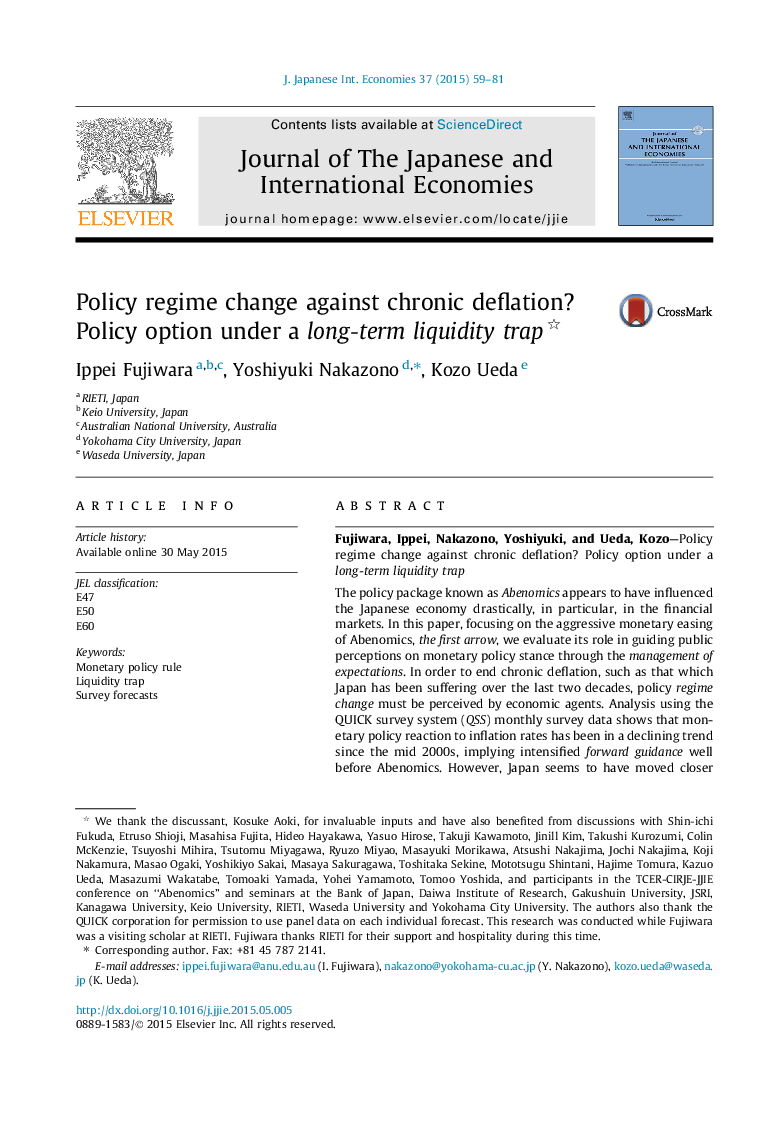| Article ID | Journal | Published Year | Pages | File Type |
|---|---|---|---|---|
| 964466 | Journal of the Japanese and International Economies | 2015 | 23 Pages |
•We evaluate the role of the first arrow of Abenomics on monetary policy stance.•Policy regime change must be perceived by economic agents to end chronic deflation.•No sizable difference in perceptions on monetary policy stance has been found.•Japan seems to have moved closer to a long-term liquidity trap.•There, even long-term bond yields are constrained by the zero lower bound.
The policy package known as Abenomics appears to have influenced the Japanese economy drastically, in particular, in the financial markets. In this paper, focusing on the aggressive monetary easing of Abenomics, the first arrow, we evaluate its role in guiding public perceptions on monetary policy stance through the management of expectations. In order to end chronic deflation, such as that which Japan has been suffering over the last two decades, policy regime change must be perceived by economic agents. Analysis using the QUICK survey system (QSS) monthly survey data shows that monetary policy reaction to inflation rates has been in a declining trend since the mid 2000s, implying intensified forward guidance well before Abenomics. However, Japan seems to have moved closer to a long-term liquidity trap, where even long-term bond yields are constrained by the zero lower bound. Consequently, no sizable difference in perceptions has been found before and after the introduction of Abenomics. Estimated changes in perceptions are not abrupt enough to satisfy “Sargent’s (1982) criteria for regime change” termed by Eggertsson (2008). This poses a serious challenge to central banks: what is an effective policy option left under the long-term liquidity trap?
